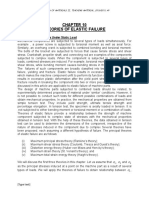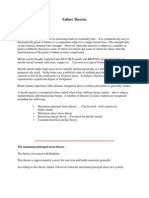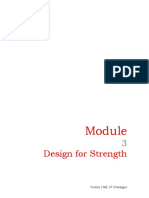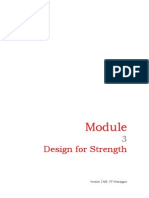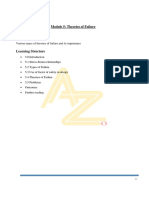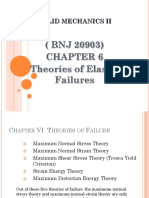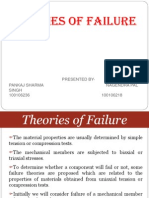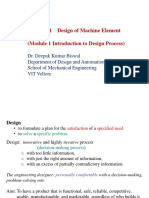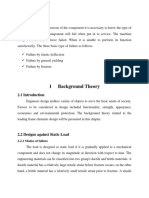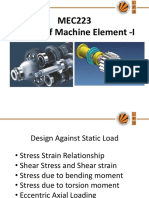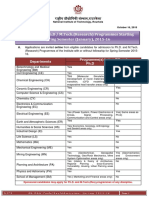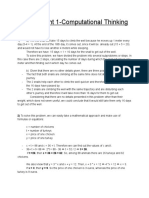0% found this document useful (0 votes)
22 views24 pagesDesign Against Static Loading@PDF
The document discusses the design considerations against static loading in mechanical components, outlining modes of failure such as elastic deflection, general yielding, and fracture. It emphasizes the importance of the factor of safety, which varies based on failure consequences, load types, material properties, and reliability. Additionally, it introduces theories of elastic failure, including maximum principal stress and maximum shear stress theories, providing guidelines for safe design practices.
Uploaded by
sinjini.banerjee.me27Copyright
© © All Rights Reserved
We take content rights seriously. If you suspect this is your content, claim it here.
Available Formats
Download as PDF, TXT or read online on Scribd
0% found this document useful (0 votes)
22 views24 pagesDesign Against Static Loading@PDF
The document discusses the design considerations against static loading in mechanical components, outlining modes of failure such as elastic deflection, general yielding, and fracture. It emphasizes the importance of the factor of safety, which varies based on failure consequences, load types, material properties, and reliability. Additionally, it introduces theories of elastic failure, including maximum principal stress and maximum shear stress theories, providing guidelines for safe design practices.
Uploaded by
sinjini.banerjee.me27Copyright
© © All Rights Reserved
We take content rights seriously. If you suspect this is your content, claim it here.
Available Formats
Download as PDF, TXT or read online on Scribd
/ 24
